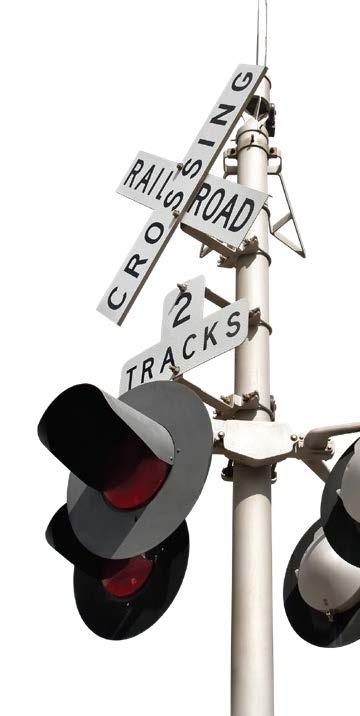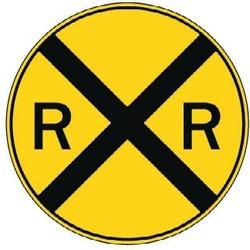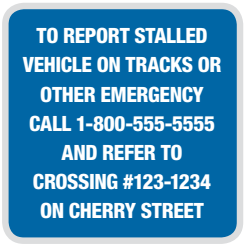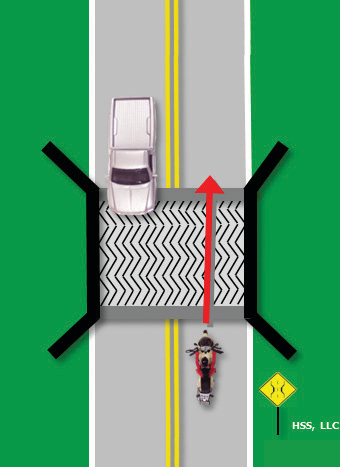
All Locations Closed for Christmas & New Years
All locations closed Thurs-Fri Dec 25-26 & Thurs 1 Jan.
Section 5.7 Continued
Railroad Crossings

- Trains and motorcycles don’t mix. Never race a train to the crossing — even if you tie, you lose.
- The train you see is closer and faster moving than you think. If you see a train approaching, wait for it to go by before you proceed across the tracks.
- Be aware that trains cannot stop quickly. Even if the locomotive engineer sees you, a freight train moving at 55 miles per hour can take a mile or more to stop once the emergency brakes are applied. That’s 18 football fields!
- Never drive around lowered gates — it’s illegal and deadly. If you suspect a signal is malfunctioning, call the 1-800 number posted on or near the crossing signal or your local law enforcement agency.
- Do not get trapped on the tracks; proceed through a highway-rail grade crossing only if you are sure you can completely clear the crossing without stopping. Remember, the train is three feet wider than the tracks on both sides.
- If your vehicle ever stalls on a track with a train coming, dismount immediately and move quickly away from the tracks in the direction from which the train is coming. If you run in the same direction the train is traveling, when the train hits your vehicle you could be injured by flying debris. Call your local law enforcement agency for assistance.
- At a multiple track crossing waiting for a train to pass, watch out for a second train on the other tracks, approaching from either direction.
- When you need to cross train tracks, go to a designated crossing, look both ways, and cross the tracks quickly, without stopping. Remember, it isn’t safe to stop closer than 15 feet from a rail.
- ALWAYS EXPECT A TRAIN! Freight trains do not follow set schedules.
- Trains may be prohibited from sounding their horn at crossings. Check the railroad track visually in both directions before crossing.
Railroad crossing sign

Report a stalled vehicle sign

Grooves and Gratings
Riding over rain grooves or bridge gratings may cause your motorcycle to weave. Maintain a steady speed and ride straight across. Crossing at an angle forces riders to zigzag to stay in the lane.
Gate Crossings

Test Your Knowledge
- The greatest potential for conflict between you and other traffic is:
- On the expressway.
- At intersections.
- When riding in a group.
- Usually a good way to handle tailgaters is to:
- Change lanes and let them pass or slow down to allow for more space ahead.
- Speed up to put distance between you and the tailgater.
- Ignore them.
- When it starts to rain it is usually best to:
- Ride in the center of the lane.
- Ride on the right side of the lane.
- Ride in the tire tracks left by cars.
- The best way to help others see your motorcycle is to:
- Keep the headlight on.
- Use eye contact.
- Honk your horn.
Answers
- B – see the section " Intersections"
- A – see the section "Being Followed"
- C – see the section "Slippery Surfaces"
- A – see the section "Increasing Conspicuity"